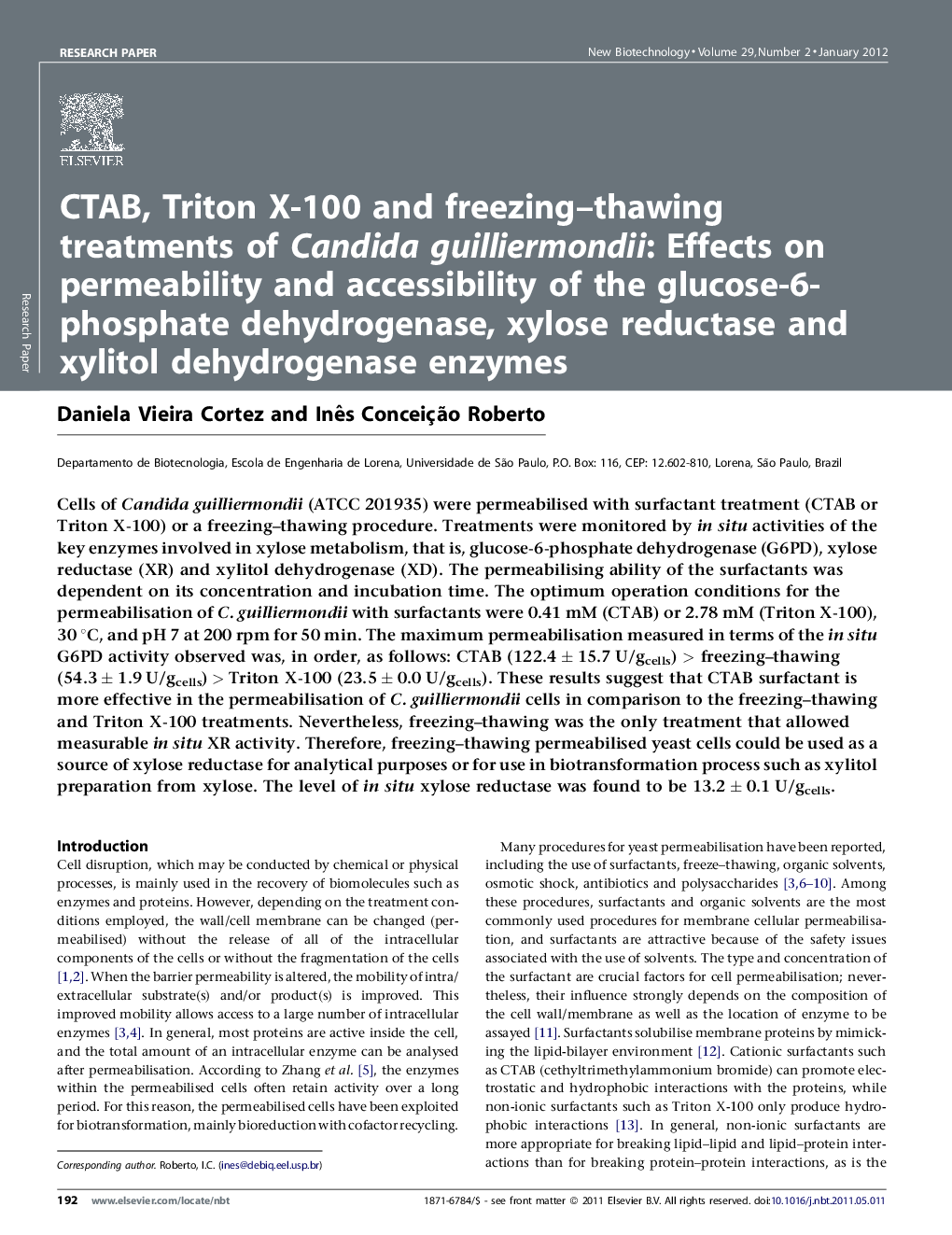| Article ID | Journal | Published Year | Pages | File Type |
|---|---|---|---|---|
| 33436 | New Biotechnology | 2012 | 7 Pages |
Cells of Candida guilliermondii (ATCC 201935) were permeabilised with surfactant treatment (CTAB or Triton X-100) or a freezing–thawing procedure. Treatments were monitored by in situ activities of the key enzymes involved in xylose metabolism, that is, glucose-6-phosphate dehydrogenase (G6PD), xylose reductase (XR) and xylitol dehydrogenase (XD). The permeabilising ability of the surfactants was dependent on its concentration and incubation time. The optimum operation conditions for the permeabilisation of C. guilliermondii with surfactants were 0.41 mM (CTAB) or 2.78 mM (Triton X-100), 30 °C, and pH 7 at 200 rpm for 50 min. The maximum permeabilisation measured in terms of the in situ G6PD activity observed was, in order, as follows: CTAB (122.4 ± 15.7 U/gcells) > freezing–thawing (54.3 ± 1.9 U/gcells) > Triton X-100 (23.5 ± 0.0 U/gcells). These results suggest that CTAB surfactant is more effective in the permeabilisation of C. guilliermondii cells in comparison to the freezing–thawing and Triton X-100 treatments. Nevertheless, freezing–thawing was the only treatment that allowed measurable in situ XR activity. Therefore, freezing–thawing permeabilised yeast cells could be used as a source of xylose reductase for analytical purposes or for use in biotransformation process such as xylitol preparation from xylose. The level of in situ xylose reductase was found to be 13.2 ± 0.1 U/gcells.
